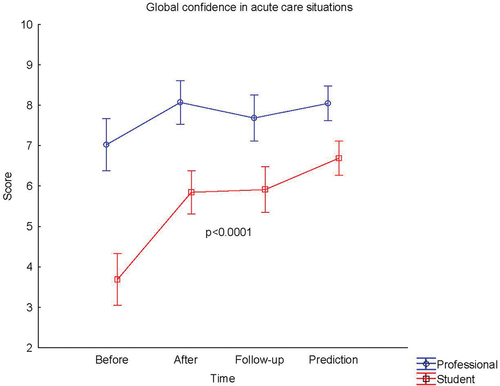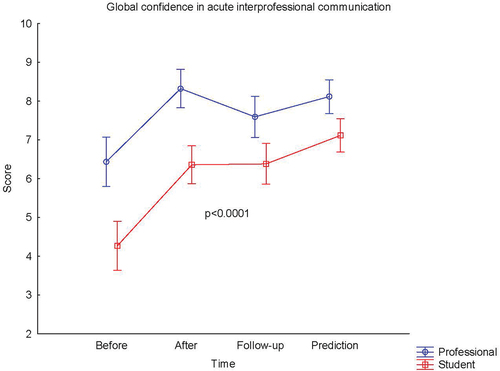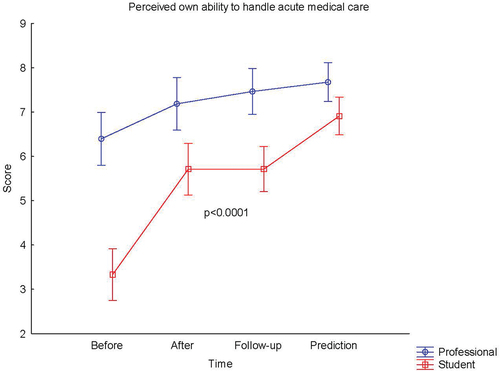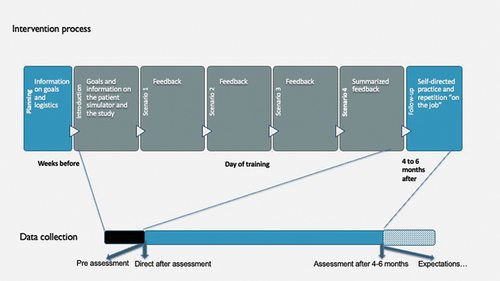Figures & data
Table 1. Intended learning outcomes for the simulation-based team training in handling of acute emergency medicine situations.
Figure 2. Self-assessed global confidence in acute care situations before and after simulation-based team training (SBTT). 1. Questionnaire 1: Before refers to their self-assessed knowledge and competence state prior to the SBTT; After refers to their self-assessed knowledge and competence state immediately after the SBTT 2. Questionnaire 2: Follow-up refers to the self-assessed knowledge and competence state 4–6 months after the SBTT and a prediction of own future gain. Student denotes medical and nursing students. Professionals denotes newly graduated doctors, nurses and auxiliary nurses. All answers in the questionnaire were graded on a ten-point scale with verbal anchors: 1 = Almost always insecure and 10 = Almost always secure. Means and 95% confidence intervals are indicated. P-values refers to the change over time in a three factor repeated measurements analysis of variance (ANOVA). .

Figure 3. Self-assessed confidence in acute interprofessional communication before and after simulation-based team training (SBTT). 1. Questionnaire 1: Before refers to their self-assessed knowledge and competence state prior to the SBTT; After refers to their self-assessed knowledge and competence state immediately after the SBTT 2. Questionnaire 2: Follow-up refers to the self-assessed knowledge and competence state 4–6 months after the SBTT and a prediction of own future gain. Student denotes medical and nursing students. Professionals denotes newly graduated doctors, nurses and auxiliary nurses. All answers in the questionnaire were graded on a ten-point scale with verbal anchors: 1 = Almost always insecure and 10 = Almost always secure. Means and 95% confidence intervals are indicated. P-values refers to the change over time in a three factor repeated measurements analysis of variance (ANOVA) .

Figure 4. Self-assessed professional handling of acute medical care in accordance with the A-B-C-D-E strategy before and after simulation-based team training (SBTT). 1. Questionnaire 1: Before refers to their self-assessed knowledge and competence state prior to the SBTT; After refers to their self-assessed knowledge and competence state immediately after the SBTT Questionnaire 2: Follow-up refers to the self-assessed knowledge and competence state 4–6 months after the SBTT and a prediction of own future gain. Student denotes medical and nursing students. Professionals denotes newly graduated doctors, nurses and auxiliary nurses. All answers in the questionnaire were graded on a ten-point scale with verbal anchors: 1 = Almost always insecure and 10 = Almost always secure. Means and 95% confidence intervals are indicated. P-values refers to the change over time in a three factor repeated measurements analysis of variance (ANOVA).


